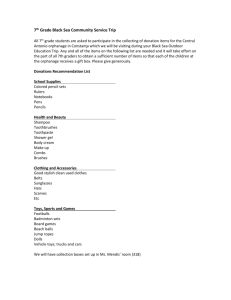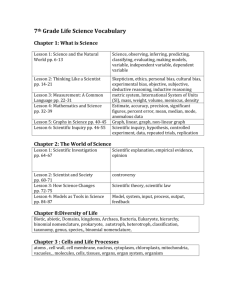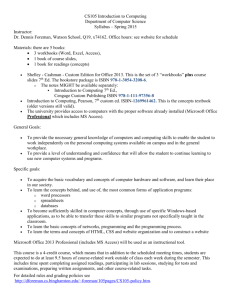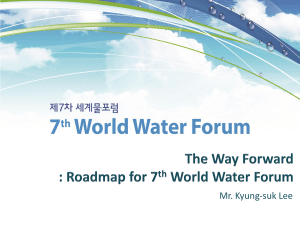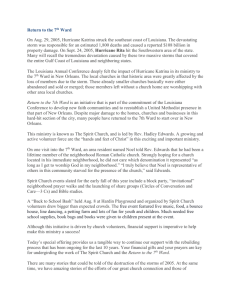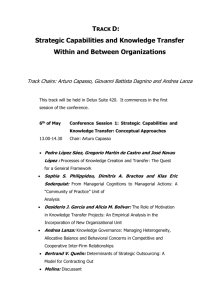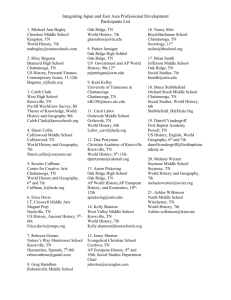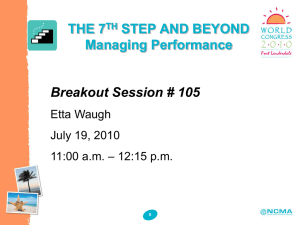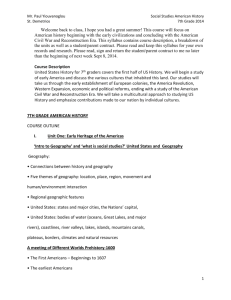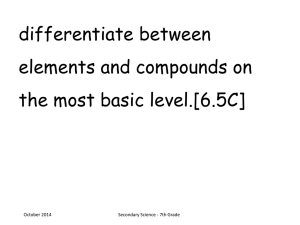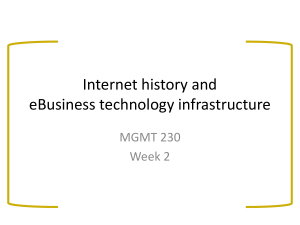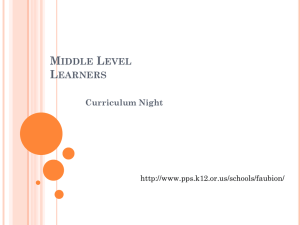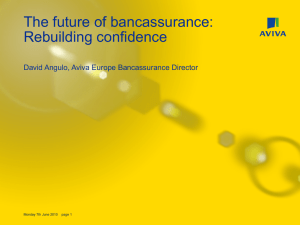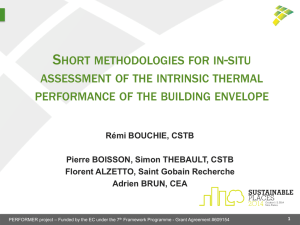Presentation - Achieving Impact 2014
advertisement
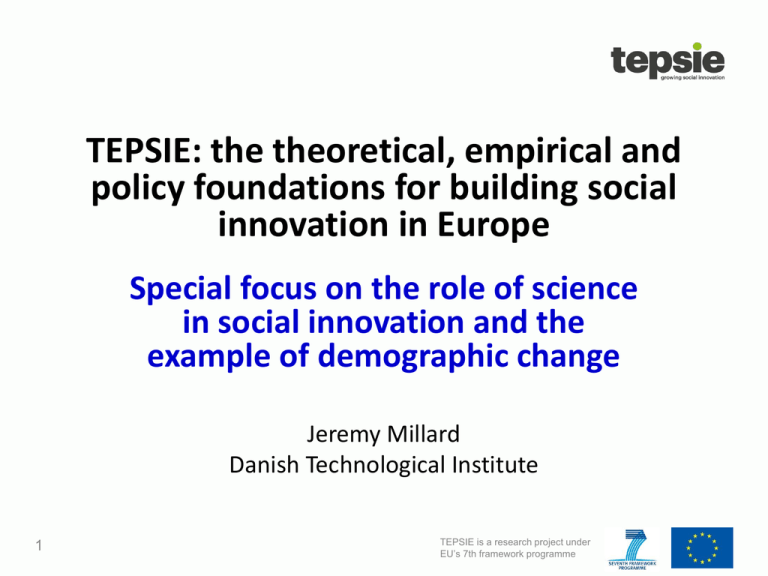
TEPSIE: the theoretical, empirical and policy foundations for building social innovation in Europe Special focus on the role of science in social innovation and the example of demographic change Jeremy Millard Danish Technological Institute 1 TEPSIE is a research project under EU’s 7th framework programme Tepsie objectives Major contributions to: • Developing tools, methods and policies for EU strategy for social innovation and tackling ‘wicked’ problems • Examining theoretical underpinnings, content and methodological frameworks • Moving towards consistency of definitions and understandings • Strengthening the scientific foundations 2 TEPSIE is a research project under EU’s 7th framework programme Some scientific underpinnings (1) What is the theoretical challenge? Summary definition of social innovation BEPA definition (2011): “Social innovations are innovations that are both social in their ends and their means.” Here, social innovation has two main parts 1. Processes: new ways in which societies operate 2. Impacts: new solutions to meeting real social demands at 3 levels: a. Social demand: Needs of groups, e.g. disadvantaged & vulnerable b. Societal challenge: Broader view of social wellbeing across all society c. Systemic change: Tackling need by changing fundamentals of society 3 TEPSIE is a research project under EU’s 7th framework programme Some scientific underpinnings (2) How does social innovation take place? Three main steps (?) 1. Experiment & multiply options – ”publish” prompts Proposals 2. Select the best, what works – ”filter” prototypes sustaining 3. Scale – ”grow” scaling systemic change 4 “Failure” is good – but fail small and early, rather than big and late TEPSIE is a research project under EU’s 7th framework programme Some scientific underpinnings (3) Mixes of methods and tools ? Tools & techniques: e.g. ethnographic; visualisation from product design; user involvement from social movements; commissioning methods from public sector Funding methods used for science; venture capital; tendering; grant giving Best/good practices and knowledge sharing from industry; qualitative, appreciative enquiry and social policy experimentation from the social sciences; more quantitative log-frames and randomised control trials from medical and other sciences Cross sector learning, e.g. businesses using models for mobilising user networks developed by non-profits; and NGOs learning from venture capital how to finance emerging ideas and how to kill off ones not working. 5 TEPSIE is a research project under EU’s 7th framework programme Some scientific underpinnings (4) How to measure ? Three trends in measurement Up the value chain More focus on outcomes and impacts Out of the organisation Draw on multiple sources and actors Down the organisational hierarchy More focus on localities, the front line, users and beneficiaries 6 TEPSIE is a research project under EU’s 7th framework programme Rapidly changing demographics • • • • Population growth Migration Urbanisation Ageing ”timebomb” • Inter-generational transfers 7 Economic costs of ageing (conservative estimate) TEPSIE is a research project under EU’s 7th framework programme Example: social innovation and the ”ageing crisis” The Viedome community platform (NL) Mextal: commercial firm with €7m turnover pa, 25 employees Partnerships with LAs, civil organisations, communities, firms Embedding services and activities in everyday life and community 8 Toolbox for personalising home care by user choice of services and ICT across 8 pillars of support: Care Advice Comfort Communication Security Entertainment TEPSIE is a research project under EU’s 7th framework programme Commerce Information
